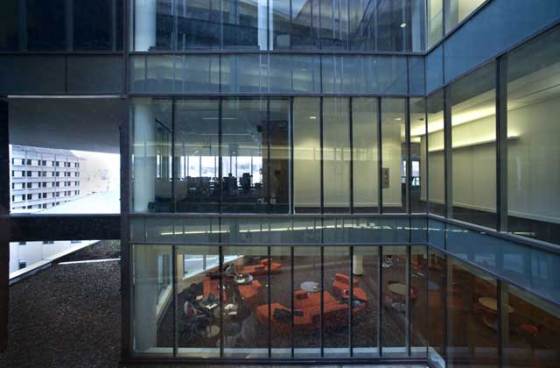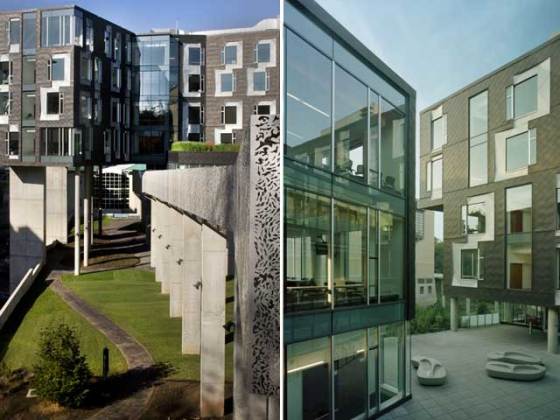Green architecture – Carnegie Mellon University Gates and Hillman Centers
 Carnegie Mellon University (CMU) Gates Center for Computer Science and the Hillman Center for Future-Generation Technologies have recently been awarded with LEED Gold certification. With that achievement, the Gates and Hillman centers managed to join 10 other CMU buildings which demonstrate their commitment to energy and water conservation, as well as the promotion of sustainable practice.
Carnegie Mellon University (CMU) Gates Center for Computer Science and the Hillman Center for Future-Generation Technologies have recently been awarded with LEED Gold certification. With that achievement, the Gates and Hillman centers managed to join 10 other CMU buildings which demonstrate their commitment to energy and water conservation, as well as the promotion of sustainable practice.
Designed by Mack Scogin Merrill Elam Architects, the centers have a total of 20,160 square meters (217,000 square feet) and they are constructed around a series of well lit atriums. A curved three-story ramp connects the five main entrances to the centers which serve as a crossroads for the 143-acre campus. They feature 318 offices, state-of-the art laboratories, lecture halls, 10 classrooms, a 250-seat auditorium, a café, and two University computer clusters.
Despite their size, the centers doubled the amount of green space that previously existed on the 5.6-acre site. They achieved this by removing several buildings and replacing traditional parking lots with a 150-space underground garage and 5 green roofs. Both the Gates and Hillman Centers were organized around an outdoor winter garden with pedestrian pathways, benches and natural topography featuring 300 trees in groves, more than 2000 new shrubs and a rain garden populated by wetland plants.
The green roofs are used to lower the runoff of storm water, and the buildings have systems that collect nearly 1.9 million litres (half a million gallons) of rainwater and snowmelt each year. The combination of the gray water usage for flushing toilets and the low-flow installations ensure that building uses 50 percent less water compared to a similar building without sustainable features.
The buildings are designed to be energy efficient and computers ensure that energy is properly distributed by monitoring and controlling heating, lighting and ventilation systems. The ventilation system uses rotary heat exchangers called enthalpy wheels to limit energy loss, and occupancy sensors signal wheatear lighting and heating are needed in offices throughout the buildings.
General contractor PJ Dick managed to reuse or divert nearly 98 percent of the total on-site construction waste from landfills. More than 15 percent of the building materials were manufactured from recycled materials, and 30 percent of the building materials were manufactured within 500 miles of Pittsburgh. More than half of the wood used in the buildings came from sustainable forests.












Very interesting layout of the building!